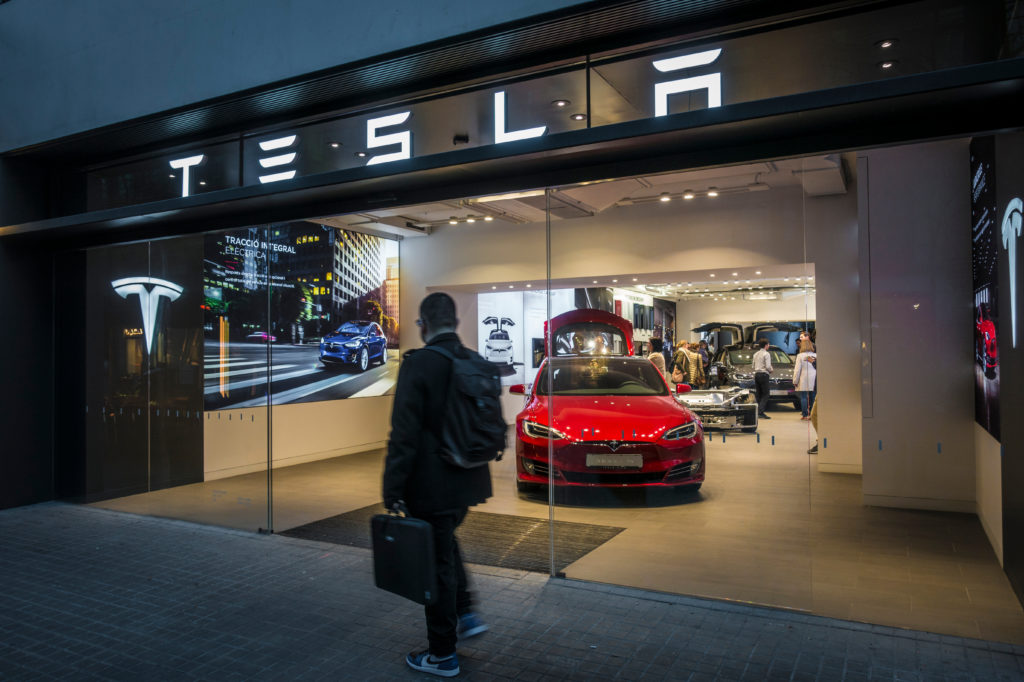
I’m often asked how our company connection to the automotive industry began. Yes, I’m from Detroit, still live there, and love cars.
But this whole thing started at Radio Ink’s Convergence seven years ago. My friend, Buzz Knight, was moderating a panel about radio and cars, featuring several luminaries from the automotive industry. As the panel was wrapping up, and Buzz was giving each expert a chance to offer concluding thoughts, Thilo Koslowski (at the time, chief automotive analyst for Gartner Research) made what became a controversial statement about the life span of car manufacturers installing AM/FM radios in their vehicles.
And that’s where everything got a little wiggy. To many, Thilo prognosticated that car radios were safe for several years down the road. But others heard him suggest the car radio was going to become an endangered feature in cars in just a matter of a few years.
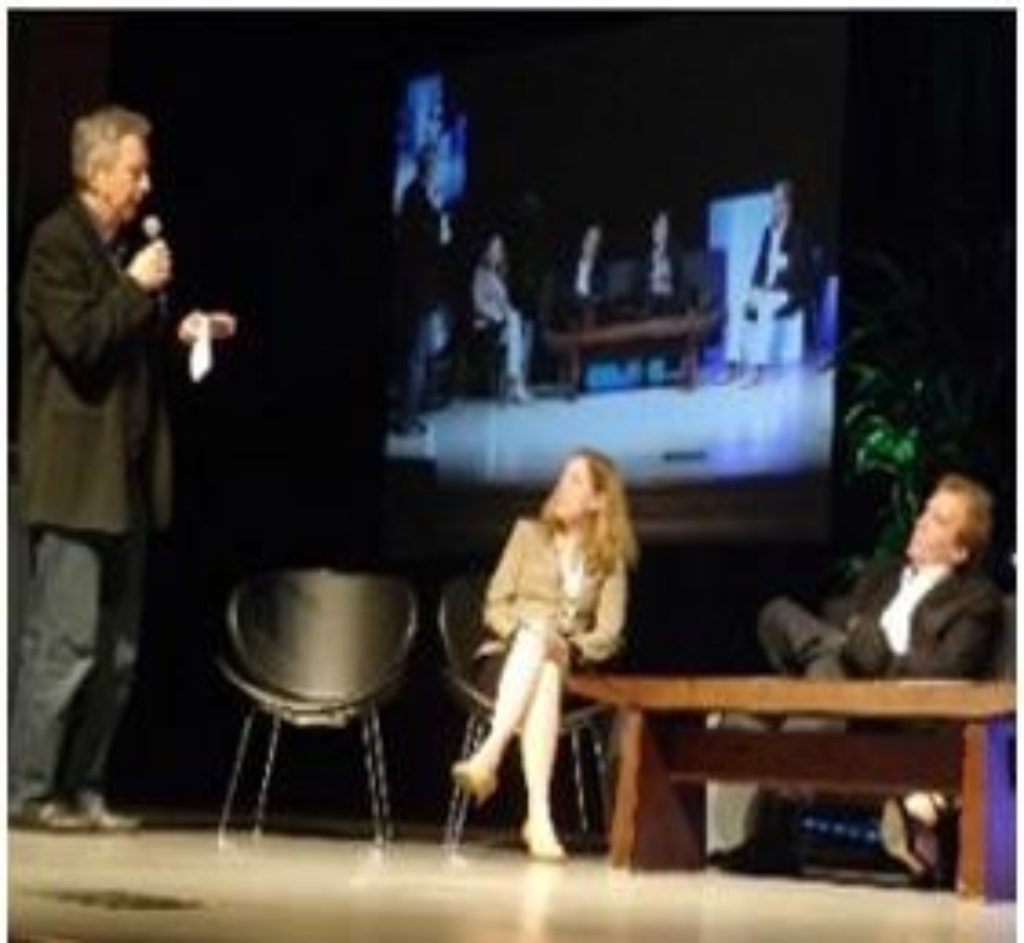
And that’s when Radio Ink‘s Eric Rhoads grabbed a mic, jumped on stage, and began to question Koslowski and the other panelists on AM/FM radio’s true life expectancy in cars. That led to an alarmist blog post the next day in Radio Ink as Rhoads sounded the alarm, “A Cold Harsh Reality for Radio: AM/FM Will be removed from The Dash.”
Now back in 2013, this was heady stuff. And the fur began to fly throughout both the radio and automotive industries. It led to a number of assurances from car makers about AM/FM radio’s permanent place in car dashboards, settling the issue down.
But it was that event that led us (along with Valerie Shuman) to get together with Eric and the Radio Ink team to partner on the DASH Conference in Detroit later that year, and again in 2014 and 2015.
Perhaps it’s not surprising this issue has once again raised its ugly head. And now in 2020, the dashboard turbulence is coming from Elon Musk’s innovative Tesla line of electric cars. There have been “wrinkles” from BMW and their electric vehicles with the elimination of AM radio in some models.
But last week, Tesla shook things up with the announcement of an optional (and expensive) software infotainment update available on older models (pre-2018). It creates a new video interface – something we saw a lot of at CES 2020 from many manufacturers and in several concept cars.
This is an expensive update – $2,500 – enabling video streaming of Netflix, Hulu, YouTube, and Twitch – as the “passenger economy” heats up. But that’s not all. Another “feature” of this software update is the elimination of AM radio, FM radio, and even satellite radio.

That spurred response from several industry observers (Radio World, Radio Ink, and Inside Radio among them), including Strategy Analytics’ Roger Lanctot, someone with whom I’ve shared the stage at several conferences these past few years. In a LinkedIn post, Roger minced few words:
“Google, Apple, and Tesla have all turned their backs on the broadcast radio industry in spite of the wide reach of radio – a reach that exceeds that of television – and the fact that it is free, localized content ideally suited to consumption in a mobile environment. Tesla’s decision likely only affects a sliver of Tesla owners given the cost of the optional upgrade and the limited in-vehicle enhancements, but it has the ominous tinge of something more sinister.”
Obviously, Tesla is anything but a mainstream automaker, frequently opting to zig while the traditional industry zags. And like Apple with its innovative and beautifully designed gadgets, Elon Musk’s company is a trendsetter. The rest of the industry watches Tesla carefully to learn how their vehicles are designed, built, sold, and marketed. They’ll be paying attention to this software upgrade, and its implications.
This is not the first time Tesla infotainment offerings have leaned away from broadcast and toward streaming platforms. And while this feature set only applies to Tesla owners “invited” to purchase this update, this may be their way of testing the waters.
How much pushback (if any) will they get from their owners? And will that empower Tesla to lock in this policy on new models moving forward?
And if so, what impact might that have on the rest of the auto industry, increasingly interested in being compensated for their dashboard “inventory” by media and tech companies. The historic relationship between broadcasters an automakers has been basically reciprocal…sort of.
They build the cars and have historically supplied the radio hardware (at no charge to broadcasters). In exchange, radio stations supply the 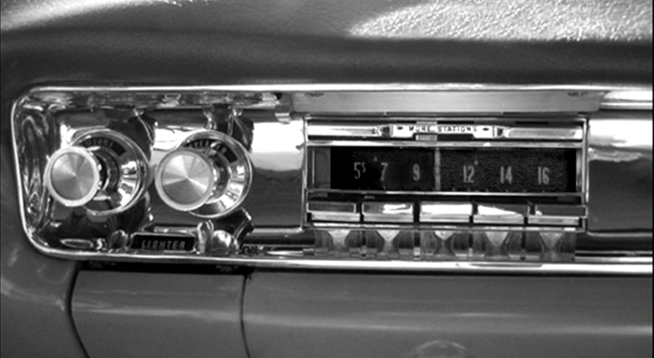 entertainment and information that has provided the driving soundtrack for nearly a century. Of course, broadcasters have also done a sensational job of leveraging their in-car scale to sell billions of commercials on a local, regional, and national basis.
entertainment and information that has provided the driving soundtrack for nearly a century. Of course, broadcasters have also done a sensational job of leveraging their in-car scale to sell billions of commercials on a local, regional, and national basis.
The automakers’ and dealers’ cut of that revenue? Absolutely nothing. In fact, radio has been happy to take their advertising dollars, too.
So, what does Tesla’s decision portend for the future of the radio in the dashboard. Is it Eric Rhoads’ nightmare coming true or is it another one-off from car makers frequently experimenting with the features in their vehicles?
I certainly don’t speak for the radio broadcasting industry, but I’ve learned my way around this real estate over the past many years, working with, partnering with, and conducting research for the NAB, as well as the last 16 years of Techsurvey in which we’ve included important questions about radio’s relationship with the car.
So, here are some steps radio’s leadership might consider before this year gets away from us.
1. Create a newly formed automotive committee from the NAB – The departure of Steve Newberry in the next few weeks signals new directions for the radio (and TV) industry’s chief trade organization. Steve was especially proactive in the intersection of radio and automotive. During his time at NAB, Steve expanded relationships and involvement with CES and a host of other automotive conferences and events. Along with smart NAB staffers like Sam Matheny, David Layer, and other members of the NAB team, radio began the process of collaboration with automakers. Don’t stop now.
2. Establish a Detroit office – Our attendance at CES this past decade+ has underscored the reality the auto industry doesn’t know a whole lot about radio. Most car company executives grew up listening to the radio stations that many of us created and programmed. But, it’s 2020. Tell these folks you work in “radio” and they’re liable to ask you if you mean Pandora or SiriusXM. Anyone who’s serious about automotive and where the industry is headed has a Detroit presence. That includes all 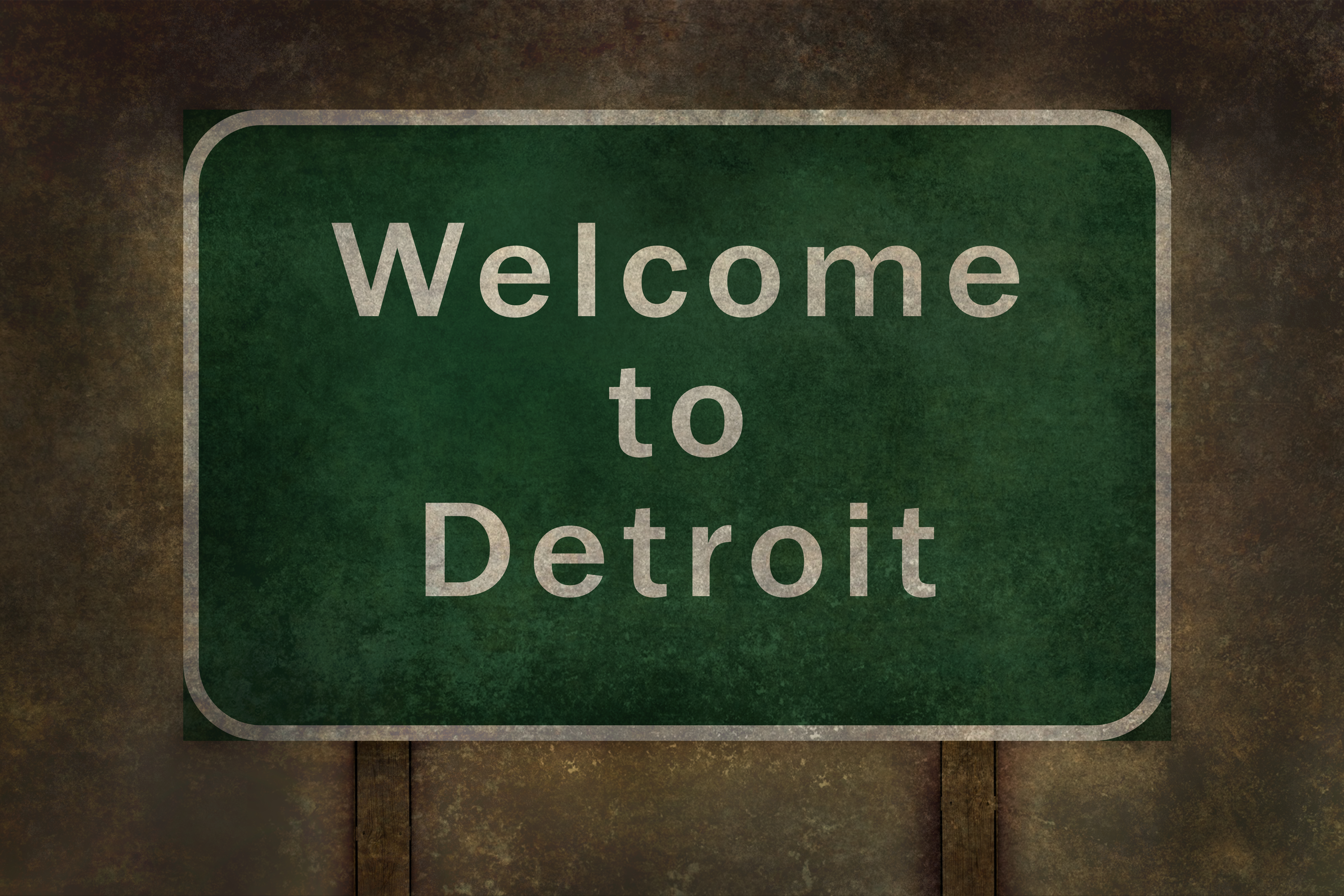 the Tier 1 and Tier 2 companies that supply gadgets, features, technology, hardware, and software to car makers. Broadcast radio needs a seat at the Motor City table.
the Tier 1 and Tier 2 companies that supply gadgets, features, technology, hardware, and software to car makers. Broadcast radio needs a seat at the Motor City table.
3. Hold the Radio Show in Detroit – While cities like Orlando, Dallas, and Nashville are popular convention sites, it’s time for radio to show a little love and attention to the auto industry. Convening the Radio Show in Detroit sends a message to both broadcasters and automakers about the import of cars – and their future to the radio industry in America – and around the world. It would allow for a special track of sessions, featuring some of the movers and shakers in the car industry in much the same way we brought both worlds together with DASH. As the world shifts, broadcasters and automakers have a lot on their respective plates. But sending a message that cars are still the lifeblood of radio would make a powerful statement to the car community about radio’s ongoing commitment to entertaining and informing drivers – and passengers – at no cost to them.
4. Let Tesla know they’re making a mistake – A survey of Tesla owners might reveal a strong level of unhappiness. Or a national survey of car owners (especially important for automakers) would be a reminder to all OEMs that Tesla’s move is wrongheaded. On the PR front, pushing back on Tesla’s social media outlets might be another way to make a statement about the value radio in the car. It’s important the radio industry makes some noise here. Roger Lanctot doesn’t work for our industry, yet was the first to step up in a meaningful way to WTF Tesla’s decision.
5. It’s time to reassess your mobile strategy and your stream – The latest move by Telsa should serve as a reminder to radio broadcasters about the value of their streaming assets, and especially their presence on mobile devices and on platforms like Apple CarPlay and Android Auto. Many radio stations have, at best, a mediocre mobile strategy, or they simply do little reinforcement of their apps and other ways consumers can access their streams. As radios disappear from homes and workplaces, broadcasters must ensure they have strong streaming assets, as well as communicating their presence to their audience. Other auto manufacturers may be assessing the value of a radio tuner in their dashboards. Broadcasters need to be prepared for any eventuality.
A final word about Tesla…
As Roger suggests, this software release may be their way of testing the waters. As noted, automakers receive no revenue from AM/FM radios in their cars. It might be helpful to know what Tesla is thinking on the topic.
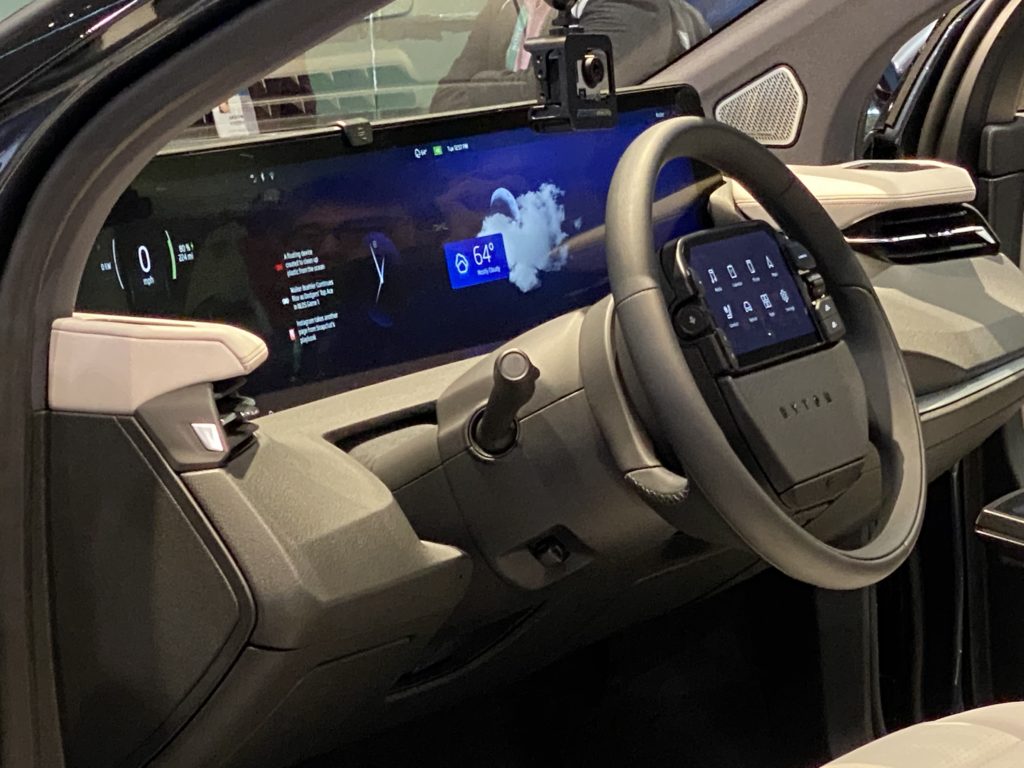 Clearly, other electric vehicles feature conventional radio access. As we saw at CES 2020, the new Chinese car company, Byton, is working with Xperi. integrating HD Radio in their vehicles, scheduled to come to market this spring.
Clearly, other electric vehicles feature conventional radio access. As we saw at CES 2020, the new Chinese car company, Byton, is working with Xperi. integrating HD Radio in their vehicles, scheduled to come to market this spring.
And make no mistake about it. The new Byton looks great side by side with any Tesla model. And its dashboard array (left) looks every bit as good as what you see in any luxury car.
While having a radio in the dash isn’t likely to be a deciding factor for buyers of upscale electric vehicles, why wouldn’t a luxury vehicle be able to access just about everything?
For an expensive software update, it is astonishing that while offering more video features, Tesla is forcing its legacy drivers to accept less audio entertainment and information. Shouldn’t a $2,500 upgrade feature an expansion of services and options?
And after all, what’s more important to the average Tesla owner?
Access to Twitch – or the ability to easily tune in their preferred local radio stations?
Perhaps we’re about to find out.
You can read Roger Lanctot’s piece here.
- Like A Pair Of Old Jeans - April 2, 2025
- What’s Fair Is Fair - April 1, 2025
- What’s On Your Bucket List? - March 31, 2025




I was at GM’s EV day last week, where the company showed its future electric vehicle lineup. That also included some elaborate center screens and infotainment systems that put Tesla’s to shame.
I pointedly asked, will these vehicles continue to have terrestrial radio in them, and was told for the record, that they will.
I didn’t specifically ask about AM, but did at the launch of Ford’s Mustang Mach E electric vehicle. Not only do they plan to have AM in the vehicle, they were kind enough to use my radio station, WWJ as an example in one of their demonstrations.
From my point of view the auto industry remains committed to terrestrial radio, although AM could become problematic as more electrification requires more shielding.
And also it’s easier than ever to listen to your favorite station on your smart phone. In most vehicles, if you’re phone is connected, all you need to do is hold down the voice button and say “Play (call letters)” and you have the stream.
Now it’s our job to go out there and create compelling content.
One other takeaway from the GM EV day. I heard GM CEO Mary Barra has a plaque in her office that’s very appropriate to those of us in the radio business.
It says something along the lines of.
“It’s up to us. Nobody’s coming to rescue us.”
I knew I liked Mary Barra. This is exactly right, Jeff. The future is in our hands. What we do as an industry to keep radio healthy and resilient is our call. How we keep our content fresh and compelling is up to us. Tesla doesn’t represent everyone (at least for now). As an industry, we need to step it up, and make sure our medium remains front and center in cars. Thanks for the thoughtful comment.
Thank God for Jeff Gilbert. Time the NAB finds the Jeff Gilberts of the world to assist us with our way forward. Indeed, no one is coming to rescue us. We need to get in front of this now…
Thanks, Scott. Jeff speaks for a lot of people.
As I was reading the article, I was thinking almost word to the word as Jeff Gilbert has expounded in his comment. “It’s up to radio. Nobody is coming to rescue us”….. That said, I think it is quite telling that you chose to use a black and white photo of a push button car radio….. #yearningforthepast #lookforwardandwhatcanbe
It’s the old school guy in me, Greg. Thanks for the comment.
A great point made by Jeff Gilbert, “And also it’s easier than ever to listen to your favorite station on your smart phone. In most vehicles, if you’re phone is connected, all you need to do is hold down the voice button and say “Play (call letters)” and you have the stream.” Voice command is the future. I’m finding the new Alexa Auto is working better and more consistently in my car. The software is being updated and the connection has improved. I simply ask the smart speaker to play any station I want and it plays, no traditional radio needed as long as I have a cell phone signal in the car. Still, as Fred says, we should not sit back and allow AM/FM to be removed without voicing our concerns and reasons for leaving AM/FM as part of the new dashboard in all cars.
Not everyone streams, knows how to do so, or wants to. There’s no question where we’re headed – and our new Techsurvey 2020 will underscore that – but the import of conventional radio remaining in dashboards continues to be of value. Thanks, Mike.
It’s not about rescue, it’s about positioning radio in a new way. 95% of people listen to radio weekly is not a position, it is an overreaching statement that ADVERTISERS do not care about. If I buy a station with a 10 share, I reach 10% of markets listening audience, not 96%. I would have to spend a lot of money to reach 96% of the market, unduplicated, on radio.
Second, make it easier to buy radio: Most stations and radio groups do not even have a B2B sales focused website to help prospective advertisers understand the value of the station(s) they are looking at buying. Also, one that allows a planner to estimate what they would need to spend on that station to reach their desired audience, and allow for some type of comparison. Software companies do this. Digital advertising allows for this to some degree.
When I call and get someone, it is let me see who handles that account, or who is our agency person, etc., it takes too long to get answers that are sellable to a client.
Develop a new way to sell: A few spots a week, for a year, is a worthless endeavor and one that does not allow radio to claim any uptick in sales. Most advertisers are looking for a lead gen or demand generation campaign. Radio should lean into more spots in clusters, to maximize reach in a particular window. And according to almost every study I have seen, across multiple ad channels, the two biggest factors in driving sales are #1 creative and #2 reach.
Set and make obvious minimum ad levels to be effective on your station. In the service industry this is a common practice. Example: we deliver award winning websites starting at $7,500 (in essence saying don’t waste my time if you don’t have enough). Or in auto, models start at $24,000.00.
Be way more transparent!
And last, activation. Radio Disney made $36 million a year with no ratings and on signals that one could hear clearly most of the time. They sold activations. Radio could do this if they were less worried about selling lackluster cookie cutter digital programs, cutting staff and marketing, and actually focused on doing what it takes to win. Example: In radio I set up meetings with half a dozen major film studios (this only works in a top 20 market), for the right media value they were willing to offer us a slot for a winner on the red carpet for a movie premier (we did not waste this as an on-air contest for listeners only). The studios were also willing to allow us and our sponsor to use the movies marks in a local market activation campaign. We had Broadway work with us in the same way, tourism boards, etc.
Rob, there’s a lot of meat here, and I will let our readers respond to points they feel are salient. But as you suggest, this story about Tesla goes well beyond the headlines, and right to the heart of how the radio industry has done business. Thanks for your comment.
Perhaps in addition to reaching out to the auto industry, we should be doing a better job of getting our voices heard with the recording industry.
They must negotiate in good faith with smaller broadcasters as regards digital royalties. As it stands today, there is only loss in putting a stream online – because the more of our listeners that listen online, the more it costs us, and it is structured in a way a local station can’t “break even” on it. No business would rationally pursue that as a business plan but due to changes of both consumer preference and industry pressure, that’s what must be done.
I have no desire to be resistant to change but let’s face facts. Radio broadcasters (especially non corporate stations without group leverage) are punished by an outdated assumption of consumer behavior. The law that is behind the royalty system today considers OUR streams a “digital copy” of a recording. That’s right. The legal assumption is that people will record our low-fi streams instead of buying a CD or a download.
Look at the calendar. Are most people buying CDs or downloads? Nope. They’re streaming higher quality, on demand. And who’s being punished for the “piracy” problem that no longer exists? That’s right – local radio.
I realize the higher levels of the recording industry probably don’t care about local stations except when it comes time for the royalty payments. I know the artists and promoters value what we do, particularly in new music forward formats. But the industry and their legal counsels have got to deal in good faith and stop punishing radio for growth onto new platforms. I’m even willing to do some trading – performance royalty in exchange for simplified streaming and small broadcaster discount? Let’s talk.
But that conversation has to be had and something has to be done. Or digital growth will be handicapped by forces who don’t seem to care if my station survives “progress” or not. And while TuneIn is great to have in the dash, they don’t care about broadcasters either. The only reason I could get one of my signals on is because it was already there under previous owners – they’ve stopped taking new submissions for terrestrial signals.
If you’re a new signal now, be prepared to launch your own app with your own funds, and then cue the dipping into your pocket for the privilege of reaching your own local listeners where they are.
I love what I do and those I do it for. But the greed has got to stop or radio, the artists, and our communities are going to suffer for it. This isn’t a healthy or sustainable situation.
Matt, thanks for the heartfelt note. I’m sure a lot of broadcasters – especially in the ma & pa zone – feel your pain. There are many factors working against broadcasters at this time, driven in large part of both technology and greed (as you point out). There’s a lot to sort through here. Clearly, digital revenue – while on the rise – will not touch the margins broadcasters enjoyed when it was all spot revenue.
The world is changing, and this Tesla decision may be just the beginning. You and broadcasters like you may have difficult decisions to make – funding distribution strategies that may/may throw off the rquired amounts of cash. You are not obligated to stream, of course, but not doing so may come at a very different type of cost. Thanks for reaching out.
Maybe we’re looking at this from the wrong standpoint. There’s a lot of work to be done to convince Silicon Valley that radio is still relevant and important. But what bothers me is how much radio is overlooked as an important source of information in times of crisis or emergencies. The one thing radio is better equipped to do than any other medium (especially in cars) is to have the ability to stay on the air in these situations. If internet and cell service are ever cut or go down, radio can still broadcast–and we have back ups to our backups to stay on the air. It may take an act of Congress to force the hand of some of these folks. Maybe the first step is getting Apple to turn on its radio chips in all of their phones?
Rob, that’s a tall order. But I believe your idea about crisis coverage has merit. Problem is, the average crisis in this country is almost always isolated to a region or metro (flood, hurricanes, wildfires, etc.). That is, until the coronavirus that sure looks like it will ultimately impact every town eventually. In much the same way the federal government is struggling with containment and just getting its arms around the crisis, state and local governments appear to be dealing with it in a much more logical and orderly fashion. That’s why this moment could be the perfect proving ground for local radio – if it’s up for the task. Thanks for chiming in.